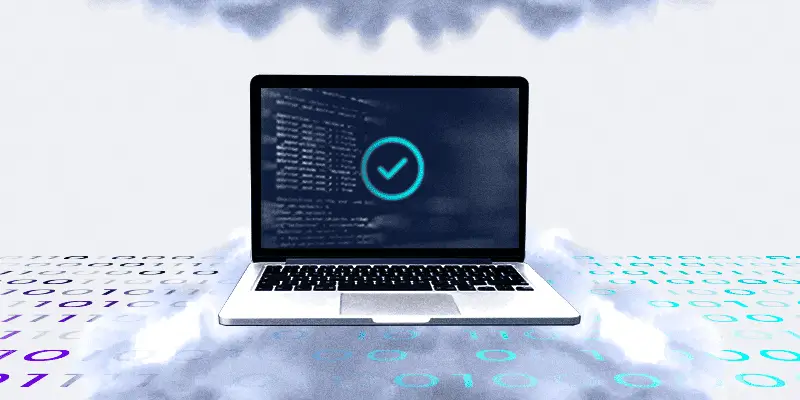Salesforce data security should be a constant concern. The consequences of a data breach or data loss event can be very expensive while also interrupting your ability to remain in operations.
The threats facing your Salesforce environment are constantly evolving so you need to cover your bases in every way possible. This includes tactics such as maintaining a current data backup and ensuring continuously high-quality code.
High-quality code provides the foundation for secure updates and application development.
Your Salesforce DevOps pipeline is aimed at creating the most secure environment possible to support your customers and enable your team members. Salesforce data security relies on structurally sound architecture within these updates. And the best way to accomplish this is through high quality code.
But what happens when your code falls short?

Here are 7 considerations for Salesforce data security and the quality of your code:
1. Coding Errors Enable Data Loss/Corruption
The structure of your update or application will impact the way in which data is handled within it. And if your application has coding errors, there is a chance the input data will be miscataloged, forwarded to the wrong location, or simply lost.
Proper coding structures ensure your application functions correctly and accurately processes the data included within it.
Utilizing static code analysis tools will provide multiple benefits, but properly securing your data is near the top of the list in terms of importance.
2. Bugs Create Vulnerabilities
Any errors or bugs that exist within your system are potential entry points for cybercriminals. These errors can also potentially create a scenario where a team member unknowingly exposes sensitive information.
Misfires within your Salesforce environment from bad code can create opportunities for bad actors to exploit weak points and gain access to your system.
Think of your Salesforce data security strategy as a boat in water. A proper strategy will find any holes before the boat gets near the ocean.

3. Improper Code Can Create Unwanted Changes
Proper testing is an essential aspect of every Salesforce DevOps project. Your team needs to be able to predict how any new lines of code will interact with each other, as well as how they’ll interact with the rest of your system when the new update goes live.
Bad code can interrupt existing functionality and result in unintentional changes to your live environment.
Testing is an essential aspect of ensuring high quality code. Checkpoints along the way are great for catching errors, but finding issues in real time is ideal.
4. Metadata Impacts Functionality and Security
Any discussion of Salesforce data security also needs to address metadata. The metadata within your system has a huge impact on the functionality of your related fields, for instance, and can have a negative effect if it becomes compromised.
Include metadata within your data security strategy to ensure functionality remains consistent and you don’t fall out of line with regulatory guidelines.
Improperly secured metadata can lead to the exposure of sensitive information which puts your company at risk of falling out of compliance with regulations.
5. Finding Coding Errors Early Reduces Overhead Costs
Every business consideration is going to eventually discuss the return on investment. Most transactions will be framed on what you risk and what you can gain. Maintaining high code quality has a direct impact on both your Salesforce data security efforts as well as your ROI.
Coding errors become more expensive to fix the later they are found in the DevOps pipeline.
Static code analysis provides real time insight into the health of your code and enables developers to rectify mistakes as they are written.
6. Main Types of Security Liabilities from Bad Code
Bad code impacts Salesforce data security in a variety of ways. The best way to guard against these negative results is to be aware of them in the first place. So to illustrate the need for maintaining high quality code for data security reasons on top of the ever-present need for functionality, here are five common types of security vulnerabilities created by bad code.
SQL Injection
An attacker gains access to your system through cracks in your Salesforce data security created by coding errors. They then inject malicious code and interfere with queries made to the database.
Cross-Site Request Forgery
Personal information can be exposed with a bad actor forces a user who has already been verified in an application to perform unwanted actions.
Cross-Site Scripting
Malicious scripts are injected into a website. The users are targeted for their personal information instead of targeting the website itself.
Broken Authentication
A bad actor steals the authentication credentials of a verified user to gain access to the system. This allows them to pretend they are the user to access records and perform functions.
Security Misconfiguration
There are many options for configuring security settings within a Salesforce environment. Improperly configuring these settings creates an opportunity for hacks.
7. SANS, CWE and OWASP Standards
The quality of your code can be measured by many different standards. Effectiveness and functionality of the eventual product are common ways to judge the success of an update or application, but they are not the only ways. There are a few notable institutions that purport standards to which your code can be compared.

SANS
SANS Technology Institute began in 1989 with the goal of providing insights relating to informational security. Today, they are a respected resource for cybersecurity education. They provide training and certification for individuals to learn more about the tools, research, and skills that create a more secure technological infrastructure.
CWE
Common Weakness Enumeration (CWE) is a list of weaknesses for software and hardware that is community-developed. They categorize various vulnerabilities which creates a rubric that can be used to assess the effectiveness of data security measures and point to potential preventative measures.
OWASP
The Open Web Application Security Project (OWASP) is a group that works toward providing online assistance to people looking to improve software security. They provide free documents, methodologies, and tools relating to web application security. Their standards create a litmus test for the overall security of a development project.
